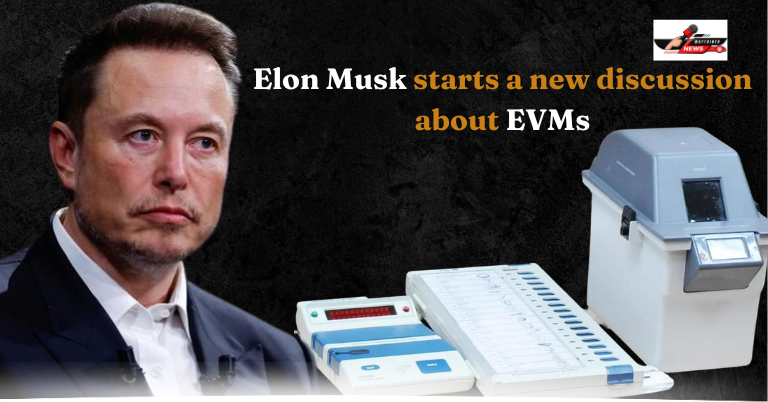Elon Musk: Tesla CEO Elon Musk wants EVMs, or electronic voting machines, to be “eliminated” because he believes they are vulnerable to hacking by humans or AI.
Musk remarked on Saturday, in response to a revelation of possible voting anomalies caused by EVMs in the Puerto Rico election. The Twitter CEO’s comments on the hotly disputed topic have also made their way into Indian political discourse, reigniting interest in the subject.
EVMs are a “black box,” according to Rahul Gandhi, and no one is permitted to examine them.
Gandhi remarked, “Serious concerns are being raised about transparency in our electoral process,” alluding to the controversy surrounding purported EVM tampering in Maharashtra’s Mumbai North West seat during the just-ended Lok Sabha elections—a charge that the Election Commission denied.
Also Read: West Bengal train accident
Musk’s opinions might be relevant in the US, where internet-connected voting machines are utilized, but in India, electronic voting equipment is safeguarded, according to former Union Minister Rajeev Chandrakshar. In response to Musk’s statement, he called it a “sweeping generalization” and extended an offer to give the billionaire a “tutorial” on how the EVMs operate.
How do EVMs in India operate?
As explained by the election body, Electronic Voting Machines (EVMs) consist of two components: the Control Unit and the Balloting Unit. These units are connected by a five-meter cable, with the Control Unit remaining with the polling officer and the Balloting Unit placed inside the voting compartment.
The Control Unit has a ‘ballot button’ that the poll official presses to release a ballot. When this happens, the voter can cast their vote by pressing the blue button on the Balloting Unit next to their preferred candidate and symbol.
Are EVMs powered by electricity?
According to the Election Commission, EVMs do not require electricity as they operate on standard batteries, manufactured by either Bharat Electronics Limited or Electronics Corporation of India Ltd.
Each EVM can record up to 2,000 votes and accommodate a maximum of 64 candidates, including the ‘None of the Above’ (NOTA) option when using the earlier M2 EVM models from 2006-2010.
However, the M3 EVMs, introduced in 2013, can accommodate up to 384 candidates by connecting up to 24 Balloting Units.
Who was the EVMs’ designer?
The EVMs were designed by an expert panel from the election body in collaboration with two government-owned entities, Bharat Electronics Limited and the Electronics Corporation of India Limited. These two public sector undertakings also handle the manufacturing of the EVMs.
What is the price of EVMs?
M2 EVMs cost approximately Rs 8,670 per unit, whereas M3 EVMs are slightly more expensive, priced at around Rs 17,000 each.

